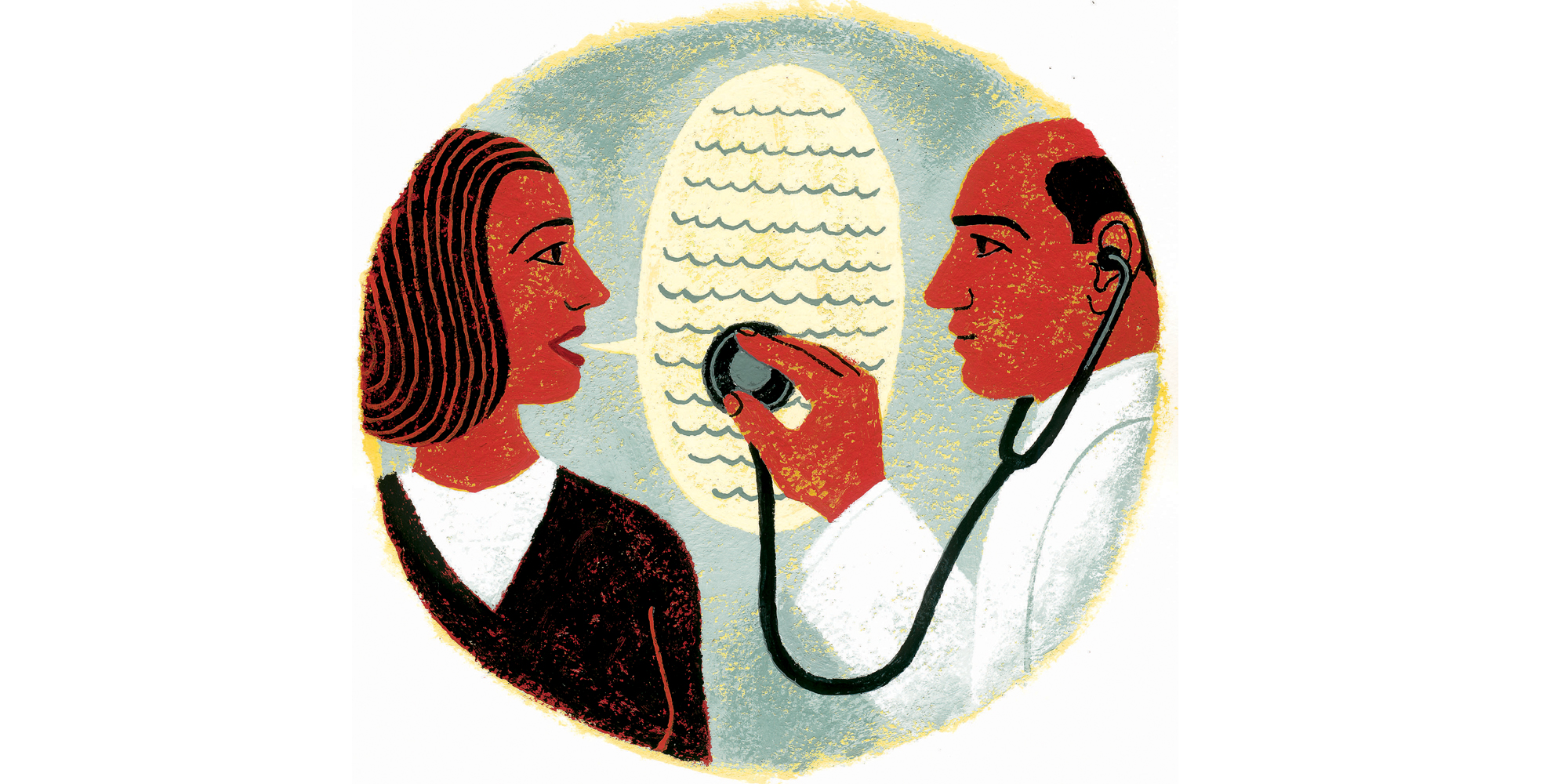
(Illustration by James Steinberg/Theispot)
A physician-economist tests the health and cost benefits of a closer doctor-patient relationship.
The intensive care unit room is abuzz. Nurses prick an arm and tape and drape an IV. Physicians introduce themselves, bumping elbows in sanitized greeting and filling each other in on the patient, a man in his 60s whom we’ll call Mr. Z, unconscious on the bed. Observing it all is Ram Krishnamoorthi, a primary care physician trying to get the attention of the specialists around him.
This is Krishnamoorthi’s first stop on morning rounds. The array of specialists, who arrived shortly before him, was summoned from across UChicago Medicine’s medical staff as part of ICU protocols for the particular ailments that land a patient in the unit. In this case, it was a life-threatening infection discovered during a scheduled surgery to replace a deteriorating artificial joint. As part of the University’s Comprehensive Care Program (CCP), Krishnamoorthi has come to the ICU to shift decision-making out of the hands of these specialists, with their discrete focuses, and toward an integrated, patient-focused treatment plan that may or may not incorporate each specialist’s recommendations.
He shoves his arms through the sleeves of a gauzy yellow gown, snaps on a pair of blue gloves, and wades in.
“I’m Mr. Z’s primary,” Krishnamoorthi says to each physician. “Ram Krishnamoorthi, his primary. He’s in the Comprehensive Care Program here. I’m his primary.”
Glances flicker at Krishnamoorthi, but his words do not seem to register. It’s no wonder. Primary care physicians rarely visit their patients in US hospitals anymore, a fact that led to the creation of the CCP six years ago.
A nurse leans over Mr. Z and asks loudly, “How are you feeling? Can you hear me?”
All eyes move to the patient. He doesn’t respond but rolls his head, indicating that the nurse was heard.
The conversations resume, and it takes a while before they morph to include Krishnamoorthi, who repeatedly hits the major points of his patient’s medical history and asks the specialists for their opinions of Mr. Z’s status and what they recommend. There is the sense of a finely oiled machine whirring away, and of Krishnamoorthi as a newly arrived technician, studying its gears, so that he can shift its workings.
The question is, why?
The answer is that Krishnamoorthi and the Comprehensive Care Program are an experiment conceived, designed, and overseen by UChicago physician-economist David Meltzer, LAB’82, AM’87, PhD’92, MD’93. Meltzer hypothesizes that revitalizing the primary care doctor–patient relationship for Medicare patients at high risk of hospitalization will improve outcomes for everyone involved: patients, doctors, and the payers of the bills. The experiment divides these patients into a test group that sees comprehensive care physicians like Krishnamoorthi both in clinic and the hospital, and a control group that sees different doctors in each setting. Early results show that, nationally, the potential Medicare savings could be tens of billions of dollars annually.
In the hospital each morning, it’s up to Krishnamoorthi and his four CCP primary care colleagues to anchor their patients’ acute and routine care in a long-term one-on-one doctor-patient relationship. This is not always easy, as this morning in the ICU demonstrates. Krishnamoorthi leaves the ICU room but stands quiet for a moment just outside, thinking. He picks up his coffee and heads for the nurses’ station, where he examines the patient’s chart and makes some notes to himself for follow up. Then he hustles away to his next patients, four other CCP participants.
“Did you notice all that? How I had to keep inserting myself?” he asks. “They’re all doing what they are trained to do, the clock is ticking, they have other patients to get to. It’s the system I’m constantly having to insert myself into. I’m not sure I was heard.”
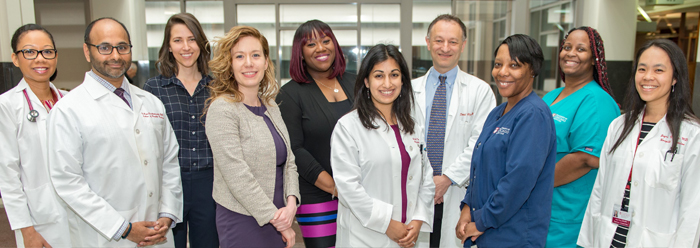
Leave it to Meltzer not to be daunted by a well-oiled machine, or by the inertia that can keep an organization from switching it out for a better system. The architect of CCP was a thesis advisee of UChicago economists Gary Becker, AM’53, PhD’55, and Sherwin Rosen, AM’62, PhD’66. He has modeled his experiment on Becker’s research into specialization in labor markets and Rosen’s research on the economics of labor substitution. Undergirding the study’s design, Meltzer says, is Becker’s insistence on “the ability to think about the world as your laboratory.”
The chief of the Section of Hospital Medicine at UChicago Medicine, Meltzer is also influenced by his colleague Mark Siegler, MD’67, whose work on the evolving nature and positive impact of the doctor-patient relationship lies at the heart of the experiment design. Another influence comes from Meltzer’s longtime appointment at the University of Chicago Harris School of Public Policy, which has prompted him to drive the program beyond UChicago, to the level of national policy, as well as toward other organizations that might benefit both in the United States and internationally.
Meltzer’s roots at the University stretch back to his years as a child of UChicago faculty members and a Laboratory Schools student from preschool through high school.
“My joke is that I didn’t start till the second year of nursery school, so I was always an outsider,” he says in his Mitchell Hospital office, in the same suite where his father and the other psychiatry faculty had their offices when he was young. “Growing up on the South Side of Chicago in the 1970s and ’80s, I saw a lot of problems,” he says, “not unlike the problems we see today—a somewhat different flavor to them, but in some ways even worse economically.”
Thinking back, he’s struck by a realization.
“Actually, it’s really interesting. I wrote two main essays when I applied to college. One was about loving designing experiments and learning things and studying things, and the other was about the history of urban renewal and Hyde Park,” he says. “Those two essays … are really this project.”
As principal investigator on the Comprehensive Care Program, Meltzer studies what seems like a common-sense proposition: that the doctor-patient relationship has an important role in a patient’s care and overall health. The simplicity of the proposition is deceptive.
Before Meltzer, no one had designed an experiment—at scale, randomized, and controlled—to determine this relationship’s influence on health outcomes. Meltzer is quick to point out that good experiment design is only part of the work. The other part of the work for a study of this scale, he says, is getting the right team in place and overcoming institutional inertia.
The CCP will track the outcome of the discussions in Mr. Z’s ICU room, which procedures he received and the overall course of his treatment, care, and sense of well-being, along with the outcomes and trajectories of the 2,500 other Medicare patients participating in the CCP at the medical center.
These patients tend to have multiple complex medical conditions, or comorbidities, such as diabetes, kidney disease, and heart disease, requiring a host of treatments that include amputation, home oxygen, dialysis, and multiple medications. They also have a tendency toward depression and anxiety. CCP patients, whose average age is 63, are hospitalized at least once a year. They are among the highest-need, highest-cost patients in the US Medicare system. Care for such patients, who represent about 25 percent of national Medicare enrollment, accounts for 85 percent of Medicare hospitalization costs, at $50,000 or more per year.
CCP participants are randomly placed either into the control group or the test group. The test group is split across the five CCP physicians, who see them in the hospital and at the UChicago Medicine primary care clinic. The chief task of these providers is to know their patients: their medical histories, their personalities, their needs, their goals, their families, their life experiences, their experience of health care. When patients feel they are known and seen, Meltzer believes, they trust their doctors to guide their care, calling their doctors rather than going to the emergency room, say, or following a recommendation not to get an expensive procedure with little clear benefit.
The “standard care” control patients continue with their current doctor. (If they don’t have one or want to switch, the study staff help them find a new primary care doctor.) When hospitalized, these patients see a hospitalist, a general medicine physician who coordinates their inpatient care but who has no previous experience with the patient and likely won’t see that patient again. While both hospitalists and primary care physicians practice general medicine, only primary care physicians have long-term ongoing relationships with their patients.
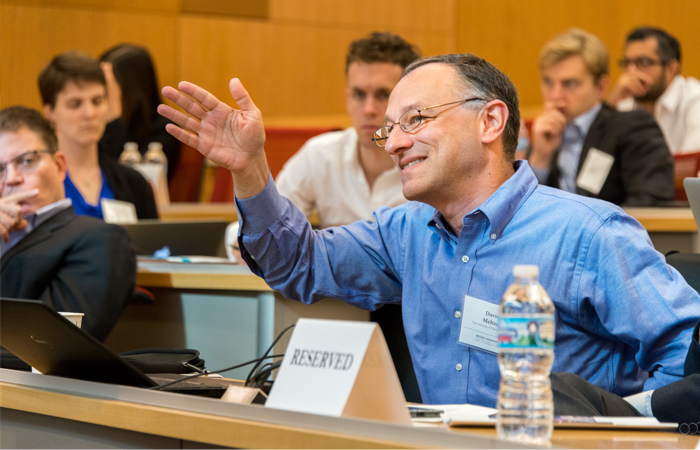
Over his career, Meltzer has developed new perspectives on the growth of hospital medicine. Hospital medicine is the name for what hospitalists practice—general medical care for patients whose needs are acute enough to require hospitalization, including the need to consult with and coordinate specialists.
Meltzer helped bring the hospital medicine model to UChicago in 1997, when it was still new and seemed to have the potential to cut costs and improve efficiency of care. When he volunteered to oversee the program, he says, “I was the last person to talk and the most junior in the room, and I said, ‘I’d love to do it.’ People were like, ‘Are you crazy? It’s never going to be doable on a big enough scale to study anything.’ I said, ‘Well, give me a chance to collect some data and maybe I can learn how to do a project.’” Since then, as the ranks of hospitalists have swelled nationally, Meltzer has studied the model’s impact at UChicago Medicine.
Over the past 20 years, Meltzer’s group has tried to interview every UChicago Medicine hospital patient, totaling more than 100,000 people. During that time, hospital medicine has become the fastest growing medical specialty, with 57,000 hospitalists caring for one-third of general medicine hospital admissions nationwide. One might think that this booming population signifies the impact of hospital medicine on patients. Not so, says Meltzer.
“What have we learned? We’ve learned that hospitalists may produce small changes in length of hospital stays or outcomes, but not the large changes we hoped for,” he says. They’re effective “only if they are sustained in their careers and gain experience.” Easier said than done; the typical work hours for hospital medicine, seven days on, seven days off, in 12-hour shifts, can be grueling and lead to attrition. (Drawing on Meltzer’s findings, assistant professor of medicine Andrew Schram, MD’14, MBA’14, recently completed a “rounder” program pilot that aims to provide patients and referring physicians more continuity of care across hospitalizations while helping hospitalists have better work-life balance.)
Though his data show that they produce measurable benefits, Meltzer concludes that hospitalists alone “are not game changers.” And yet the game has completely changed. The tremendous growth of hospital medicine, he’s found, can be traced to increased efficiency for doctors, not patients. Until the mid-1990s, primary care doctors split their days, visiting their patients in the hospital in the mornings and then seeing patients at their offices in the afternoons. But for a variety of reasons, these doctors became busier in the clinic and had fewer patients in the hospital. As a result, making the morning trip to visit patients in the hospital is not worthwhile for most primary care doctors.
Or, to use Meltzer’s economics term, the switching costs are too high. These range from the cost in time for the commute between the doctor’s office and the hospital, to the hiccups brought on by toggling between two computer systems or two sets of colleagues, to the mental shift required to switch from the complexity of acute care to more routine ambulatory care. Hospitalists eliminate these switching costs, but that added efficiency, Meltzer has concluded, can come at a cost to patient care and outcomes. Lost in the process of dividing the labor of acute care and ambulatory care was the doctor-patient relationship—recall Krishnamoorthi’s efforts to insert himself in the ICU room. CCP’s primary aim is to revitalize that relationship and its benefits for both patients and physicians.
Six years into the experiment, the CCP is achieving a 15 to 20 percent reduction in hospitalizations, with savings of several thousand dollars per patient each year. Meltzer presented his findings in June 2018 at the annual research meeting of AcademyHealth, a nonprofit health services and policy research organization. Funding for the CCP study comes from the federal Centers for Medicare and Medicaid Innovation, created as part of the Affordable Care Act to evaluate new models for delivering medical care at lower cost with better outcomes.
With additional funding from the Robert Wood Johnson Foundation and in partnership with the University of Chicago Urban Labs, Meltzer’s group is now looking more deeply into how to better serve and improve outcomes for patients whose complex social needs prevent them from fully participating. For example, a significant number of patients have difficulty with transportation to and from appointments, food security, and housing security. A dearth of opportunities for social engagement, combined with high rates of anxiety and depression, can also keep them from regular visits to their primary care doctors.
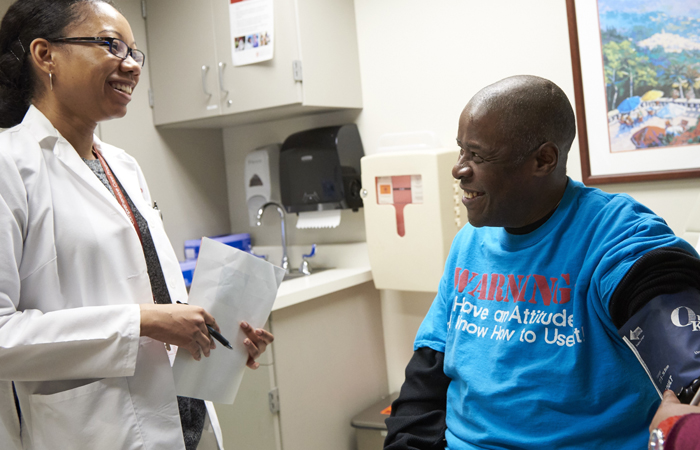
A day spent at the CCP’s primary care clinic illustrates the steady building of relationships that aids both doctors and patients if, or when, the latter find themselves in the hospital or an ICU room. All appointments begin the same way: with a warm greeting, the physician sitting down and taking a moment to really look at the patient, followed by an overall check-in conversation before the actual reason for the visit is addressed.
Much of the routine work that elsewhere would fall to a nurse or a health care coordinator—such as making sure patients have picked up prescriptions or that their home oxygen supply is in good order—is folded into the physicians’ check-in. Meltzer designed the program this way on purpose, to limit the “coordination costs.” But he also believes that this level of involvement helps the physicians really know their patients, including their daily life struggles—and helps the patients, who spend so much time going from outpatient specialist to outpatient specialist, feel cared for. This element of care, Meltzer believes, builds trust.
Today physician Grace Berry rolls her computer stool over to chat with Mr. G, in for a follow-up after being hospitalized for anemia from a gastrointestinal lesion. The 47-year-old was recently diagnosed with chronic obstructive pulmonary disease.
First off, Berry expresses her surprise at seeing her patient alone.
“Where’s your son?” she asks.
“Oh, he had an appointment today too,” Mr. G replies.
The doctor nods but notices something else.
“Where’s your oxygen?”
Mr. G lives in Wisconsin, and this afternoon the winter weather had backed up traffic. He has run out of oxygen on his commute to Chicago before and had to get a loaner tank from the emergency room for the drive home. Today his oxygen tank, with plenty left, is in the car.
Her concerns quelled, Berry begins her check-in.
“In general how has your breathing been?”
“It’s getting there,” Mr. G answers. “I get short of breath doing housework.”
Now Berry and Mr. G discuss tests she has ordered, and she asks about his dialysis and whether he’s picked up his thyroid medicine. This triggers his memory. His pharmacy only gave him a two-week supply of his stomach medication and required physician prior authorization for more. They discuss whether it’s an insurance issue, and Berry begins troubleshooting.
“Let me call right now,” she says, opening Google. “Walgreens Beloit Prairie?”
Then the gastrointestinal follow-up begins. Berry listens to Mr. G’s breathing and to his stomach. She takes a moment to check his ankles and legs. They are swollen. She recommends compression socks, and elevating his feet during dialysis.
“How’s your wife? Did she tell you I accidentally called her the other day? I think she was at work.”
Mr. G chuckles. “She told me.”
The visit, like most in the CCP primary care clinic, lasts about 30 minutes and has the conversational tone and easy back-and-forth that all the physicians employ, each in his or her own style. Down the hall, Joyce Tang, MD’04, talks a patient through knee pain that keeps him up at night and his aversion to taking medication, even Tylenol, to relieve the pain. She gently tells him that, as a caregiver with a lot on his plate, he needs his sleep.
Meanwhile, Anshu Verma, the CCP medical director, listens to a patient with scleroderma, a painful connective tissue disease that can cause autoamputation of fingers, toes, or, rarely, limbs. The patient wants to reduce his pain medication.
“I don’t like it. It puts me to sleep. I want to get off the meds. I want to get off the patch.”
“OK!” is her enthusiastic response, and she begins adjusting dosages.
In a nearby room, Krishnamoorthi listens in empathetic disbelief as an HIV-positive patient relates his experience at another hospital, where a nurse referred to his abscess as a “sin.” Then they discuss the panic attacks that wake the patient up at night.
“It’s all in my head, I know, but it seems like it’s physical, like I can’t breathe.”
“That’s because it is physical,” Krishnamoorthi immediately responds, catching and holding eye contact with his patient. “It’s both in your head, and it’s physical. The mind and body are connected, so what you’re saying is absolutely true.”
The room is silent for a moment while the patient takes in this validation.
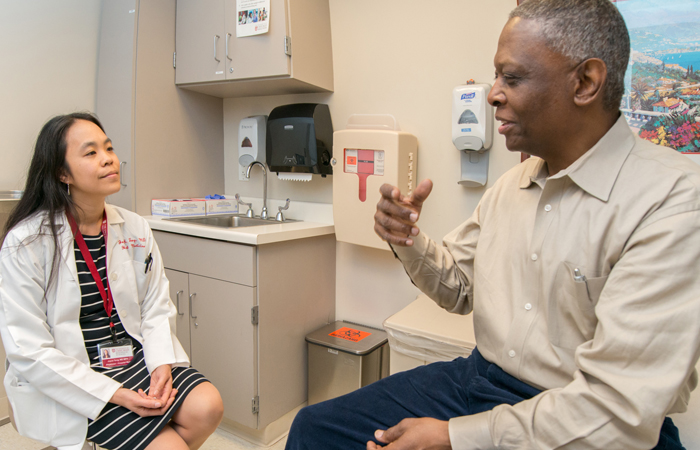
The doctors’ daily interactions underscore Meltzer’s point about needing the “right people.” They all say they were drawn to the CCP by its patient panel size, around 200 per physician, which allows for a “longitudinal” doctor-patient relationship, including getting to know patients’ families. Berry wanted to work in “transitions of care,” the movement of patients between health care practitioners and settings as their condition and care needs change. Verma says she likes the fast pace and intellectual challenge of her mornings tending to acute cases in the hospitals, balanced by more routine afternoons seeing patients in the clinic.
Every day, in the transition between morning rounds and afternoon clinic, the entire CCP team—five physicians, three social workers, two nurses, and one community-health worker—meet to discuss their patients, flag any issues, bounce ideas off each other, and vent inevitable frustrations that come from trying to shift the gears of a finely tuned machine while serving vulnerable individuals with highly complex needs.
All the physicians believe strongly in the need for a broad cultural shift back toward doctors knowing their patients well and understanding their experiences. In the Pritzker School of Medicine, Tang and Verma have started an optional patient shadowing program. Instead of first-year students shadowing physicians in the hospitals on the usual block rotation, their program pairs two medical students with two critically ill patients, whom they follow through inpatient and outpatient care, including accompanying patients to non-UChicago care settings, such as dialysis centers.
“If you want students to become doctors who are empathetic to patients, they have to understand how hard it is. Students are seeing the patients’ perspective and understanding the struggles they face,” says Tang. “We’re also involving them in a proactive way, where they can be active with patients as opposed to just shadowing a doctor. It’s very valuable for them to learn about how our health care system works—or doesn’t work—so that they can contribute to that system and contribute to the change.”
Working with Medicare patients means working with a largely late-in-life population and encountering end-of-life considerations. Up a few floors, Verma sits quietly with a patient in her 70s who begins to cry and says she’s scared and tired. “I know,” says Verma, which is why she overruled a specialist-recommended procedure that would add to the patient’s stress with minimal potential benefit.
The physicians regularly ask patients about their anxiety and depression, and the rates of both are high, prompting a programmatic expansion to address these needs. The social workers are relatively new additions to the team, and the CCP recently introduced a monthly behavioral health support group that cycles through five topics, including mindfulness, managing distress, and self-compassion. Social worker Nicole Gier has begun offering in-clinic individual psychotherapy sessions for CCP patients. Yoga is another new offering. Part of the data collection CCP does is a qualitative study, overseen by Tang, that surveys patients on their use of the program and overall sense of well-being, and will evaluate these new services against that metric.
The complex patient population on Chicago’s South Side, whom Berry says she specifically came to serve, can experience many social hurdles, not least of which is a low level of education. Part of the physicians’ work is making sure patients and their families have a thorough understanding of their conditions and treatments. Krishnamoorthi often draws diagrams for his patients. Do you understand? and Do you have any questions? the physicians repeatedly ask.
The CCP is achieving significant results even while about 30 percent of the patients enrolled do not receive care through the program or otherwise engage with it. Nonparticipation, Meltzer says, is to be expected in a study of this scale, but he wanted to understand why. Initial Robert Wood Johnson Foundation funding enabled Meltzer’s group to identify the culprit: “unmet social needs.” Subsequent RWJF funding has helped Meltzer and a team led by Emily Perish, MPP’16, identify and cluster these needs—access to food, housing, transportation, and support networks, for instance—and begin finding ways to help patients meet them.
This means not only helping them navigate confusing and hard-to-find sources of care and aid but also partnering with community gardens, offering cooking workshops, and connecting patients with arts programs. The funding also enabled the team to bring on its community-health worker. The RWJF-funded study has its own randomized control and test groups, whose care includes access to these additional services. It will measure the CCP’s success at getting more enrollees to fully participate in the program.
As the CCP expands into meeting patients’ social needs, the program is beginning to feel like a lifestyle—which, in fact, it aims to be. Health care itself, as the CCP team practices it, might be defined as a lifestyle too: as an entire philosophy of caring for the living, particularly when such care is complex. As his experiment continues to demonstrate that it can reduce hospitalizations and costs, Meltzer believes more and more that centering medical care on lasting human relationships makes lasting human—and economic—sense.
Sharla A. Paul is a writer and editor in Hyde Park.
